| Columns Retired Columns & Blogs |
At this price point I am surprised that it's not a true three way with a dedicated midrange driver. Seems like that design choice might be the reason it has the flaws the reviewer pointed out.
I used DRA Labs' MLSSA system and a calibrated DPA 4006 microphone to measure the Paradigm Prestige 95F's frequency response in the farfield; for the nearfield frequency response, I used an Earthworks QTC-40, which has a ¼" capsule and thus doesn't present a significant obstacle to the sound.
The Prestige 95F's voltage sensitivity is specified as 91dB/2.83V/m anechoic and 94dB in-room. My estimate was very close to this, at 92dB(B)/2.83V/m. This is a speaker that plays loudly with very few watts. The 95F's impedance is specified as being "compatible with 8 ohms." You can see from the solid trace in fig.1 that the impedance magnitude drops below 4 ohms only in the lower midrange and high treble, with a minimum audioband value of 3.5 ohms at 160Hz. Though the impedance drops to 2.4 ohms at 50kHz, very little musical energy is present above 40kHz, and this should not present amplifiers with any problems. The combination of 6.6 ohms and a –42° electrical phase angle at 82Hz will also not be an issue.
The traces in fig.1 are free from the small wrinkles that would imply the existence of cabinet vibrational resonances of some kind. However, using a simple accelerometer, I did find a cluster of resonances in the midrange, with the highest in level at 301Hz, on the sidewall, level with the top woofer (fig.2). These were lower in level farther down the sidewall, though another mode appeared in that vicinity, just below 600Hz. The top and rear panels were also relatively lively, but it's fair to note that Thomas J. Norton didn't comment on any midrange congestion that might have resulted from this behavior. The Prestige 95F's high sensitivity means that any cabinet resonances will not be excited as much for a given playback level as they are in my measurements, for which I use a consistent voltage stimulus.
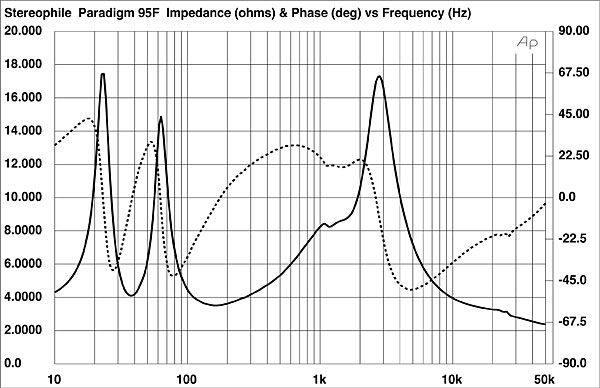
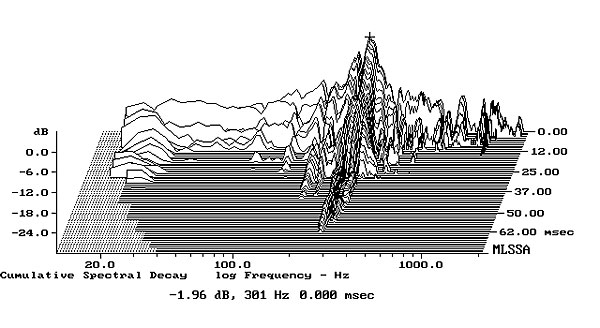
The saddle just below 40Hz in the impedance-magnitude trace suggests that this is the tuning frequency of the two ports on the rear panel. The sum of the woofers' nearfield responses (fig.3, green trace) does indeed have a well-defined notch at 39Hz, and the sum of the ports' nearfield outputs (blue) peaks in classic manner between 30 and 60Hz, with a relatively smooth rolloff disturbed by only slight peaks around 150 and 900Hz. The individual responses of the three woofers are not shown in this graph, but as specified by Paradigm, only the top woofer's response extends up to the crossover to the tweeter (red trace). As conjectured by TJN, the tweeter's output appears to be a little too high in level; of more importance, in my opinion, is the behavior of the top woofer in the octave below the crossover frequency, where a slight lack of energy is followed by a sharply defined peak.
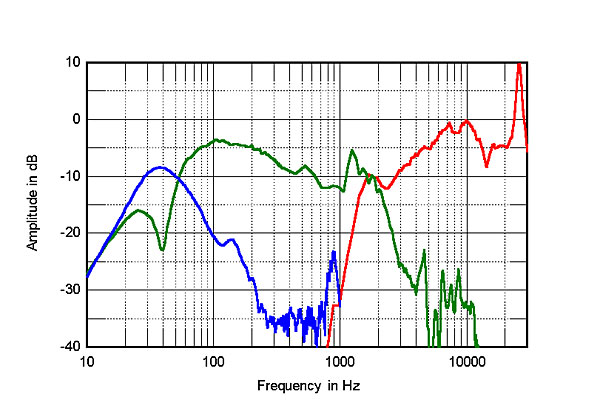
This behavior can be seen in the 95F's overall farfield response on the tweeter axis (fig.4 above 300Hz). Below 300Hz, the graph shows the complex sum of the nearfield woofer and port responses; the upper-bass peak is, in part, an artifact of the nearfield measurement technique, but it does suggest that the Paradigm's low frequencies are balanced on the rich side, as TJN noted in his listening. But higher in frequency in this graph, the sharp step upward in the 95F's response at 1kHz, the valley between 2 and 4kHz, and the excessive level of the tweeter between 5 and 12kHz, are all puzzling.
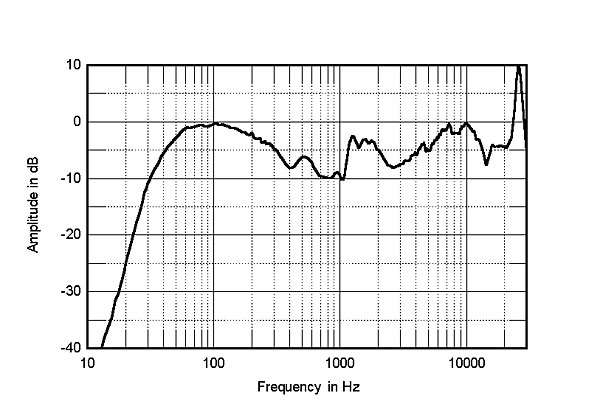
So far, all the measurements were taken with the sample with serial no. ADN1079521H04. I therefore unpacked the other sample, 'H05, and examined its behavior. (Logistical issues meant that I had to do this with a different measurement system and microphone, respectively Fuzzmeasure 3 and the Earthworks QTC-40, so I remeasured 'H04.) The results, necessarily taken at a closer distance than before (30" vs 50"), are shown in fig.5: The blue trace is 'H04, the red trace 'H05. Both speakers still feature the step upward in response and the responses in the tweeter's passband are superbly well-matched, but 'H05 can be seen to have 2–3dB more energy at the top of the uppermost woofer's passband.

I asked TJN, therefore if he had heard a difference between the two samples. (I had not yet read his review text when I performed the measurements.) Tom responded that while he thought he'd heard some minor differences, he put them down to his new listening room, which is acoustically different at the left and right.
Nonetheless, I asked him to send me the in-room measurements he'd taken using the OmniMic system. The results are shown in fig.6, plotted above 100Hz. While both speakers exhibit a lack of energy between 2 and 4kHz, sample 'H05 (bottom) does indeed have more energy present between 1 and 2kHz. However, the response step below that region is diminished in these in-room traces.
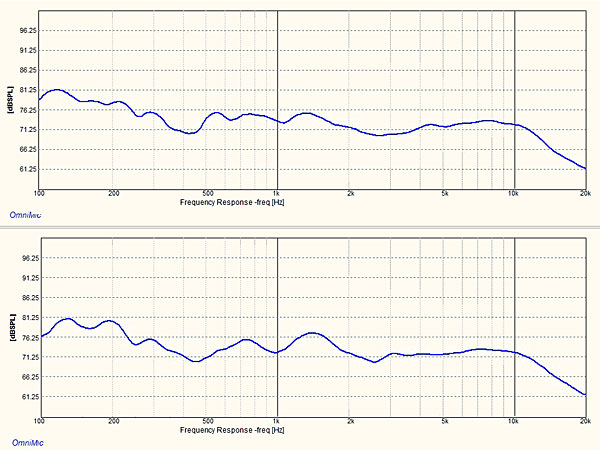
Returning to my own measurements: Fig.7 shows the horizontal radiation pattern of sample 'H04, normalized to the tweeter-axis response. Paradigm specifies very well-behaved off-axis behavior, and fig.7 confirms it, at least up to the top octave. However, the elevated on-axis response of the tweeter between 5 and 12kHz is not entirely compensated for by a lack of energy off axis. As TJN commented, the Prestige 95F will not be particularly forgiving of overbright recordings. But it is fair to note his observation that, with well-recorded music, the 95F "sparkled with life." In the vertical plane (fig.8), the dispersion is wide and even, and a suckout in the crossover region doesn't develop until 15° below the tweeter axis. Although the 95F's tweeter is a high 43" above the floor and the seated ear height of the average listener is 36", this will not be an issue.
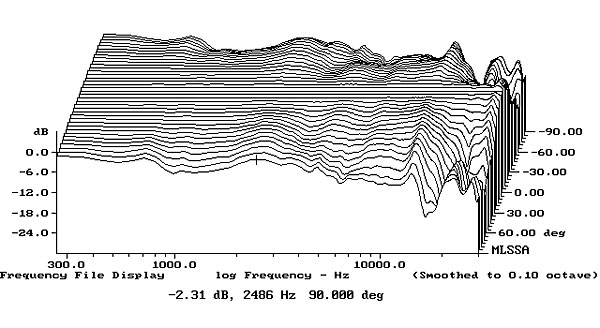

The Paradigm 95F's step response on the tweeter axis (fig.9, taken with sample 'H04) indicates that its four drive-units are connected in positive acoustic polarity, with the decay of the tweeter's step blending smoothly with the start of the woofers' step. I assumed that the ripples in the woofers' step were due to the multiple arrivals from the spaced woofers. However, the cumulative spectral-decay plot on the tweeter axis (fig.10) does suggest that the peak between 1 and 2kHz results from a problem with the top woofer.

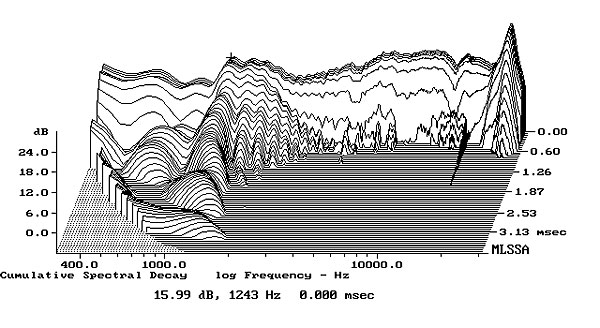
When I visited Paradigm's facility in Toronto in summer 2014, I was very impressed by the depth of the company's engineering and manufacturing expertise. They have a large anechoic chamber for acoustical analysis and state-of-the-art measuring equipment, including the Klippel system for analyzing the behavior of drive-units. I'm puzzled, therefore, by the departure of both samples from what I regard as an optimal target response, though it is fair again to note that TJN's in-room measurements are better than I would have expected from the quasi-anechoic behavior.—John Atkinson

At this price point I am surprised that it's not a true three way with a dedicated midrange driver. Seems like that design choice might be the reason it has the flaws the reviewer pointed out.

I purchased these speakers two weeks ago and although Paradigm recommends 100 hours to break in the speakers are already warming up. I have them connected to the new Yamaha 2100 natural sound amp and 2100 CD player and I am really hearing great music. They seem to really excel when the volume is turned up a bit and they fill the room with amazing sound. I thought, initially, they were too bright but that went away with listening and break in. This is the second set of Paradigm speakers that I have owned. I highly recommend them. I listen, primarily, to jazz, fusion and blues.

It seems to me that at some point in the past, Paradigm switched focus from music to "home theater". Seems like this inevitably leads to speakers with a boomy bottom (probably caused from an overstretch of design/materials/quality in an effort to give those explosions felt presence) end and overly bright treble, which even I admit often sounds "better" with TV/movies. When it comes to most genre's of music (excepting perhaps electronic, etc.) this skews the music. I notice on Paradigm's site that even their top end "signature" line has all the requisite surround implements of movie sound...

I don't think this is the home theater curse. I think a well engineered neutral speaker that can reproduce its frequency range can be good for both music and home theater...whether that be satellite with multiple subwoofers or full range floorstanding or monitor. That said, sounds this speaker is has some not insubstantial flaws. I sold my last speaker which was a Paradigm Signature 2 v.3 because its application of the beryllium tweeter spoke above the rest of the frequency spectrum and was forward sounding presentation. I couldn't stand it so away they went. Far cry from Focal's implementation of the Beryllium tweeter in their Utopia line. However, I do think Paradigm's monitor line represents good value and they sound decent. I am interested to listen to their upcoming new flagship speaker to see what new thinking and refinements they make.

Any speaker can be engineered for both home theater and music, but it seems that Paradigm is trying to vie for maximum impact in the dealer showroom, by their decision to voice these speakers with additional treble energy.
It would appear that their business slant is towards home theater, and they appear to market their speakers to this audience as well.
I don't condone this, but it is their decision to compete with hotter (balance-wise), more-mass market speakers.

I agree. Paradigm speakers try to be almost too versatile, and are better for movies than music. I had 3 pairs in different series, from budget to the upper market Studio line. They tend to be bright and lack refinement.
Their budget stuff is great for the price. But, once you get in the price range of the Studio, Prestige or Signature series, there are better alternatives for music in the same price range. I replaced a pair of Studio 100 V5 with Sonus Faber Venere 2 and I could not be happier.
The Studio 100 were like a big American 1960s muscle car. Lots of grunt and fast in a straight line. No handling in corners and bad braking. The Venere 2 are much more refined, like a small Lotus Elise. Maybe not as powerful, but more refined, nuanced and agile.

FWIW, compare JA's measurements with the ones he offered for the Studio 60v3 that I had from 2004 until this year. http://cdn.stereophile.com/images/archivesart/P60fig4.jpg
Rather striking.

For the massive price increase vs the Studio Series, these need to be way better than they are.
The prestige series are Way over priced IMO. The Classic models, to me, sound horrible.
Review seems to paint them as "meh - you can do better for the same money"

Very disappointed by both the design decisions and execution by Paradigm on the Prestige line of speakers. It's almost like the last two decades didn't happen. Has there been a change in ownership or at the head of design level?

Would it not serve readers better to see comparisons to other $5,000 speakers that are available today? Examples are the Bryston Middle T, Revel Performa3 F208 and the GoldenEar Triton One.

Add monitoraudio Gold 300 and Dynaudio Focus 340 to the list :).

I experience the 85F at the dealer and it was good for movies but when I listen to music, I felt it bright in some tracks and I'm sure there are many speakers can do better job.

I have had these speakers for over three years driven by a Prima Luna EVO 400 integrated. I find the sound superb with detail at both the high and low end. The only downside is that these speakers will reveal bad recordings as well as take your breath away on good recordings. Listening to some Rudy VanGelder releases I am often in awe at the reproduction they provide. I would highly recommend them but speakers are highly subjective.